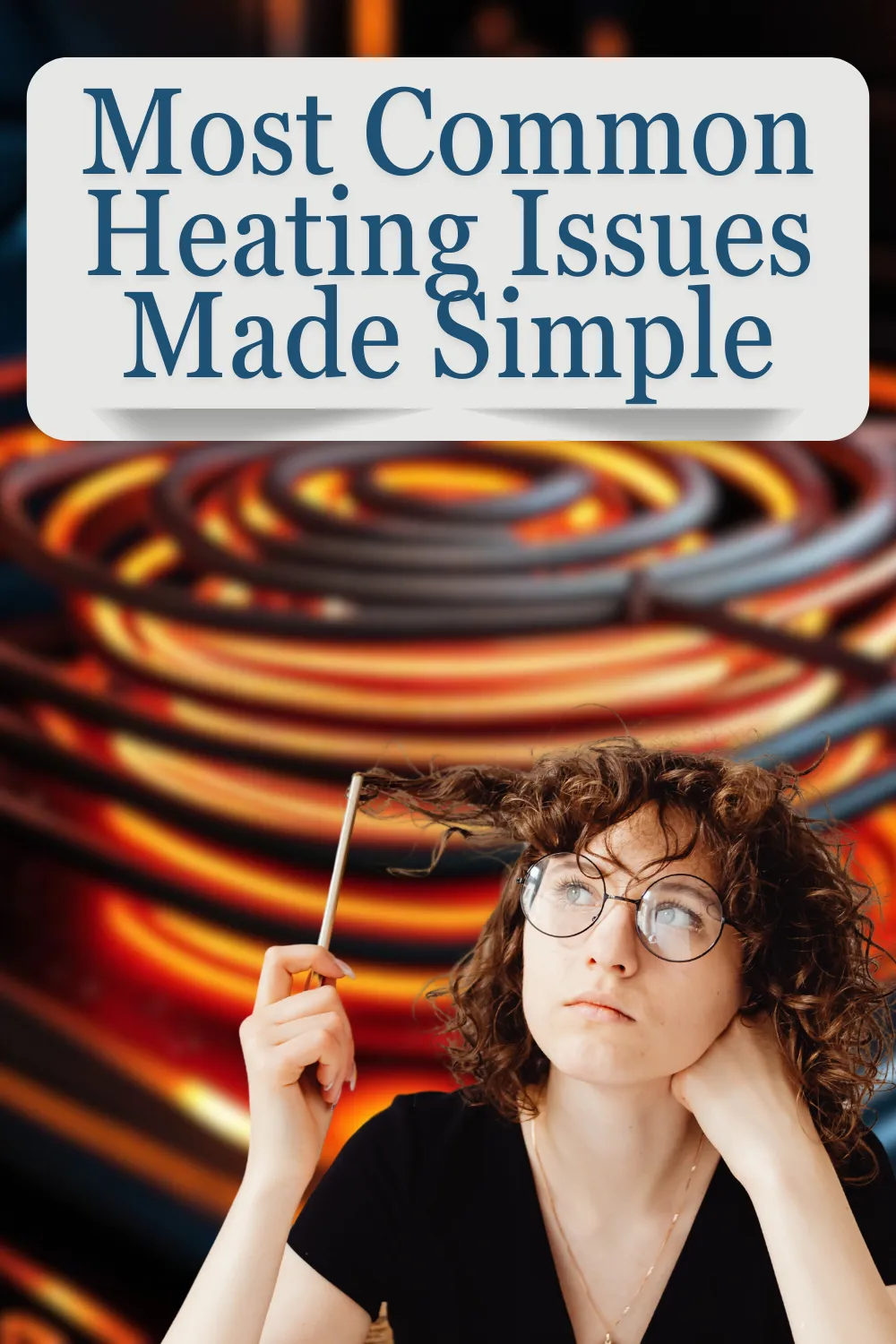THE FASTEST TOOLS IN TOWN
ZIP APPLIANCE REPAIR & SERVICE
Phone: (559) 272-4265
Phone: (559) 272-4265
Appliance Repair Tips For Fresno, CA Residents

Fresno Oven Repair: Most Common Heating Issues Made Simple
"A well-heated oven is the secret ingredient to every great meal—don’t let hidden issues spoil what’s meant to be served hot." - Appliance Boss
Introduction
A well-functioning oven is the heart of the kitchen. But when it starts acting up—undercooking, overheating, or refusing to heat at all—it disrupts everything. In Fresno homes, oven heating issues are one of the most common appliance complaints. This guide walks you through the most frequent causes of heating problems and how to address them, so you can get back to cooking with confidence.
Why Heating Issues Are the #1 Oven Problem in Fresno Homes
Fresno’s climate, full of heat and dust, puts added pressure on kitchen appliances. Ovens here are subject to extreme temperature fluctuations and environmental debris that can speed up wear and tear. When ovens break down, heating problems top the list—ranging from a complete failure to heat to unpredictable temperature swings that ruin meals.
How This Guide Can Help You Cook Without Interruptions
This guide was created to break down technical oven issues into plain language, giving you the knowledge to troubleshoot problems early or know when it’s time to call in the pros. With a little awareness and upkeep, many heating problems can be prevented altogether.

Understanding the Basics of How Ovens Heat
Gas vs Electric Ovens: Heating Differences Explained
Gas ovens use a burner powered by natural gas or propane, while electric ovens rely on heating elements. Both systems have thermostats, sensors, and control boards that regulate heat levels, but they behave differently when things go wrong. Gas ovens may fail to ignite, while electric ovens might suffer from dead heating coils or power faults.
Key Components That Control Oven Heat
Your oven's ability to cook properly depends on several components working in harmony: the heating element or gas igniter, the thermostat, sensors, control board, and even the oven door seal. A single malfunction can throw off the entire system.
Common Symptoms of Oven Heating Problems
Oven Not Heating Up at All
When your oven stays cold despite being turned on, it often points to a failed heating element, igniter, or power supply issue.
Oven Overheating and Burning Food
If meals are consistently overcooked, the thermostat or temperature sensor could be sending incorrect readings, causing the oven to overheat.
Uneven Cooking or Baking
Hot spots or undercooked areas usually mean uneven heat distribution caused by faulty heating elements, poor airflow, or a damaged sensor.
Takes Too Long to Preheat
Long preheat times may indicate weak heating elements or poor power delivery that prevents your oven from reaching the desired temperature efficiently.
Oven Shuts Off Midway Through Cooking
An oven that powers down mid-cook may be experiencing a faulty control board, overheating safety shutoff, or electrical connection issues.
Thermostat Troubles: Why Temperature Control Fails
How a Faulty Thermostat Impacts Oven Heat
A malfunctioning thermostat miscommunicates the actual oven temperature, leading to erratic heating behavior or dangerous overheating.
Ways to Test and Replace a Broken Thermostat
You can test the thermostat using an oven-safe thermometer. If there's a large temperature discrepancy, it may need recalibration or replacement.
When the Heating Element Goes Bad
Lower Element Not Heating in Bake Mode
When only the broil function works, your bake element may be burned out. This is common and usually visible as a break or blister in the coil.
Upper Element Failure in Broil Mode
If broiling fails, the top heating element is likely faulty and requires testing or replacement.
Signs Your Heating Element Has Burned Out
Lack of visible glow, uneven cooking, and no heat production are all signs that the element has failed.
Oven Sensor Problems That Throw Off Heat
What an Oven Sensor Does and Why It Matters
The sensor tells the control board how hot the oven is. If it's misreading, the oven will heat incorrectly or not at all.
How to Know if Your Oven Sensor Needs Calibration or Replacement
If your food cooks too fast or too slow and the thermostat seems fine, the sensor may be the culprit. Many sensors can be calibrated or replaced easily.
Control Board and Electrical Malfunctions
How a Faulty Control Board Affects Temperature
The control board is like the oven’s brain. If it fails, it can send false signals, shut off heat mid-cycle, or fail to start heating altogether.
Resetting vs Replacing the Control Panel
Sometimes a simple reset by unplugging the oven can fix glitches. If that doesn't work, replacement may be necessary.
Power Supply Issues That Cause Heat Failure
Tripped Breakers and Outlet Problems
If your oven isn't turning on, the issue could be with the home’s electrical circuit, not the oven itself.
Loose Wiring and Fuse Damage in Electric Ovens
Damaged wires or blown fuses inside the oven can interrupt heat supply, leading to failure or erratic operation.
Gas Oven-Specific Heating Issues
Pilot Light or Igniter Won’t Light
A faulty igniter or clogged pilot light prevents gas ovens from igniting, resulting in no heat.
Gas Valve and Supply Line Malfunctions
Gas ovens depend on a steady flow of gas. A malfunctioning valve or blocked line can stop heating completely.
Door Seals and Gaskets: Small Problem, Big Impact
How Heat Escapes Through Worn-Out Gaskets
Damaged seals let heat escape, forcing the oven to work harder and causing uneven cooking or extended preheating times.
Inspecting and Replacing Your Oven Door Seal
Check for cracks or looseness around the door. Replacing a gasket is a quick, inexpensive way to improve oven efficiency.
Blocked Vents and Airflow Disruptions
Why Proper Ventilation Prevents Overheating
Vents help regulate heat and pressure. When blocked, they can trap heat inside, damaging components and leading to overheating.
Cleaning and Maintaining Oven Vents for Efficiency
Regular cleaning of oven vents and interior fans keeps airflow steady and prevents performance problems.
User Error and Misuse
Accidentally Choosing the Wrong Settings
Misusing convection settings or broil vs. bake modes can lead to poor cooking results that seem like a malfunction.
Overloading the Oven and Blocking Heat Flow
Stuffing too many trays inside restricts airflow and causes uneven heating. Always allow room for circulation.
Age and Wear: When Your Oven Is Simply Too Old
Average Oven Lifespan in Fresno Homes
Ovens typically last 10–15 years. In Fresno’s harsh conditions, parts can degrade faster, especially with infrequent maintenance.
Telltale Signs Your Oven May Be Ready for Retirement
Frequent repairs, inconsistent heating, and obsolete parts are clear signals that replacement may be the smarter option.
Seasonal Considerations for Fresno Residents
How Hot Weather Affects Oven Performance
Extreme summer heat puts extra strain on appliances, especially those near unventilated areas like garages or older kitchens.
Why Dust and Debris Build-Up Is Worse in Fresno
Fresno’s dry climate means more airborne dust, which can settle inside oven components and affect performance.
DIY Troubleshooting Tips
Quick Fixes for Minor Oven Issues
Try unplugging the oven for a reset, checking breakers, cleaning vents, and inspecting elements before calling for repairs.
What to Try Before You Call a Technician
Check settings, test bake and broil modes, inspect the seal, and monitor temperature behavior to narrow down the issue.
When to Call in a Professional Repair Technician
Problems That Shouldn’t Be Handled Alone
Gas leaks, control board replacements, and deep electrical issues should only be tackled by licensed professionals.
Choosing a Certified Oven Repair Service in Fresno
Look for licensed, insured technicians with great local reviews. Zip Appliance and Plumbing Repair is proud to serve the Fresno area with expert, friendly service.
Repair Costs and What to Expect
Most Common Fixes and Their Price Ranges
Heating element replacement: $100–$250
Thermostat replacement: $150–$300
Control board replacement: $200–$400
When Repairs Cost More Than Replacement
If your repair bill climbs over 50% of the cost of a new oven, it may be time to upgrade instead.
How to Prevent Heating Issues in the First Place
Routine Oven Maintenance Tips
Clean spills immediately, check the door gasket quarterly, and avoid slamming the door to extend your oven’s life.
How to Keep Heating Components in Top Shape
Use the self-clean function sparingly, and always inspect elements and sensors during seasonal deep cleans.
Smart Technology for Oven Monitoring
How Smart Ovens Alert You to Heating Problems
Smart ovens send alerts to your phone if temperatures drop, rise, or stop mid-cycle, preventing major surprises.
Upgrade Ideas for Better Oven Performance
Smart thermometers, oven cameras, and voice control options can enhance cooking and help you spot issues early.
Conclusion
Keeping Your Oven Safe, Reliable, and Ready to Cook
When your oven starts acting up, it doesn’t just affect your meals—it disrupts your entire kitchen routine. Whether it’s uneven heating, a faulty sensor, or a thermostat gone rogue, knowing the root of the issue is half the battle. Regular maintenance, seasonal cleaning, and timely repairs can make all the difference in extending your oven’s life and keeping your cooking consistent.
If you're in the Fresno area and your oven needs expert attention, Zip Appliance Repair and Service is here to help. Our skilled technicians specialize in diagnosing and repairing heating issues across all oven models and brands.
Visit us at fresno.ziprepairservice.com or call us at (559) 272-4265 to schedule your repair today. Let us help you get back to hassle-free cooking in no time!

Fresno Oven Repair: Most Common Heating Issues Made Simple
"A well-heated oven is the secret ingredient to every great meal—don’t let hidden issues spoil what’s meant to be served hot." - Appliance Boss
Introduction
A well-functioning oven is the heart of the kitchen. But when it starts acting up—undercooking, overheating, or refusing to heat at all—it disrupts everything. In Fresno homes, oven heating issues are one of the most common appliance complaints. This guide walks you through the most frequent causes of heating problems and how to address them, so you can get back to cooking with confidence.
Why Heating Issues Are the #1 Oven Problem in Fresno Homes
Fresno’s climate, full of heat and dust, puts added pressure on kitchen appliances. Ovens here are subject to extreme temperature fluctuations and environmental debris that can speed up wear and tear. When ovens break down, heating problems top the list—ranging from a complete failure to heat to unpredictable temperature swings that ruin meals.
How This Guide Can Help You Cook Without Interruptions
This guide was created to break down technical oven issues into plain language, giving you the knowledge to troubleshoot problems early or know when it’s time to call in the pros. With a little awareness and upkeep, many heating problems can be prevented altogether.

Understanding the Basics of How Ovens Heat
Gas vs Electric Ovens: Heating Differences Explained
Gas ovens use a burner powered by natural gas or propane, while electric ovens rely on heating elements. Both systems have thermostats, sensors, and control boards that regulate heat levels, but they behave differently when things go wrong. Gas ovens may fail to ignite, while electric ovens might suffer from dead heating coils or power faults.
Key Components That Control Oven Heat
Your oven's ability to cook properly depends on several components working in harmony: the heating element or gas igniter, the thermostat, sensors, control board, and even the oven door seal. A single malfunction can throw off the entire system.
Common Symptoms of Oven Heating Problems
Oven Not Heating Up at All
When your oven stays cold despite being turned on, it often points to a failed heating element, igniter, or power supply issue.
Oven Overheating and Burning Food
If meals are consistently overcooked, the thermostat or temperature sensor could be sending incorrect readings, causing the oven to overheat.
Uneven Cooking or Baking
Hot spots or undercooked areas usually mean uneven heat distribution caused by faulty heating elements, poor airflow, or a damaged sensor.
Takes Too Long to Preheat
Long preheat times may indicate weak heating elements or poor power delivery that prevents your oven from reaching the desired temperature efficiently.
Oven Shuts Off Midway Through Cooking
An oven that powers down mid-cook may be experiencing a faulty control board, overheating safety shutoff, or electrical connection issues.
Thermostat Troubles: Why Temperature Control Fails
How a Faulty Thermostat Impacts Oven Heat
A malfunctioning thermostat miscommunicates the actual oven temperature, leading to erratic heating behavior or dangerous overheating.
Ways to Test and Replace a Broken Thermostat
You can test the thermostat using an oven-safe thermometer. If there's a large temperature discrepancy, it may need recalibration or replacement.
When the Heating Element Goes Bad
Lower Element Not Heating in Bake Mode
When only the broil function works, your bake element may be burned out. This is common and usually visible as a break or blister in the coil.
Upper Element Failure in Broil Mode
If broiling fails, the top heating element is likely faulty and requires testing or replacement.
Signs Your Heating Element Has Burned Out
Lack of visible glow, uneven cooking, and no heat production are all signs that the element has failed.
Oven Sensor Problems That Throw Off Heat
What an Oven Sensor Does and Why It Matters
The sensor tells the control board how hot the oven is. If it's misreading, the oven will heat incorrectly or not at all.
How to Know if Your Oven Sensor Needs Calibration or Replacement
If your food cooks too fast or too slow and the thermostat seems fine, the sensor may be the culprit. Many sensors can be calibrated or replaced easily.
Control Board and Electrical Malfunctions
How a Faulty Control Board Affects Temperature
The control board is like the oven’s brain. If it fails, it can send false signals, shut off heat mid-cycle, or fail to start heating altogether.
Resetting vs Replacing the Control Panel
Sometimes a simple reset by unplugging the oven can fix glitches. If that doesn't work, replacement may be necessary.
Power Supply Issues That Cause Heat Failure
Tripped Breakers and Outlet Problems
If your oven isn't turning on, the issue could be with the home’s electrical circuit, not the oven itself.
Loose Wiring and Fuse Damage in Electric Ovens
Damaged wires or blown fuses inside the oven can interrupt heat supply, leading to failure or erratic operation.
Gas Oven-Specific Heating Issues
Pilot Light or Igniter Won’t Light
A faulty igniter or clogged pilot light prevents gas ovens from igniting, resulting in no heat.
Gas Valve and Supply Line Malfunctions
Gas ovens depend on a steady flow of gas. A malfunctioning valve or blocked line can stop heating completely.
Door Seals and Gaskets: Small Problem, Big Impact
How Heat Escapes Through Worn-Out Gaskets
Damaged seals let heat escape, forcing the oven to work harder and causing uneven cooking or extended preheating times.
Inspecting and Replacing Your Oven Door Seal
Check for cracks or looseness around the door. Replacing a gasket is a quick, inexpensive way to improve oven efficiency.
Blocked Vents and Airflow Disruptions
Why Proper Ventilation Prevents Overheating
Vents help regulate heat and pressure. When blocked, they can trap heat inside, damaging components and leading to overheating.
Cleaning and Maintaining Oven Vents for Efficiency
Regular cleaning of oven vents and interior fans keeps airflow steady and prevents performance problems.
User Error and Misuse
Accidentally Choosing the Wrong Settings
Misusing convection settings or broil vs. bake modes can lead to poor cooking results that seem like a malfunction.
Overloading the Oven and Blocking Heat Flow
Stuffing too many trays inside restricts airflow and causes uneven heating. Always allow room for circulation.
Age and Wear: When Your Oven Is Simply Too Old
Average Oven Lifespan in Fresno Homes
Ovens typically last 10–15 years. In Fresno’s harsh conditions, parts can degrade faster, especially with infrequent maintenance.
Telltale Signs Your Oven May Be Ready for Retirement
Frequent repairs, inconsistent heating, and obsolete parts are clear signals that replacement may be the smarter option.
Seasonal Considerations for Fresno Residents
How Hot Weather Affects Oven Performance
Extreme summer heat puts extra strain on appliances, especially those near unventilated areas like garages or older kitchens.
Why Dust and Debris Build-Up Is Worse in Fresno
Fresno’s dry climate means more airborne dust, which can settle inside oven components and affect performance.
DIY Troubleshooting Tips
Quick Fixes for Minor Oven Issues
Try unplugging the oven for a reset, checking breakers, cleaning vents, and inspecting elements before calling for repairs.
What to Try Before You Call a Technician
Check settings, test bake and broil modes, inspect the seal, and monitor temperature behavior to narrow down the issue.
When to Call in a Professional Repair Technician
Problems That Shouldn’t Be Handled Alone
Gas leaks, control board replacements, and deep electrical issues should only be tackled by licensed professionals.
Choosing a Certified Oven Repair Service in Fresno
Look for licensed, insured technicians with great local reviews. Zip Appliance and Plumbing Repair is proud to serve the Fresno area with expert, friendly service.
Repair Costs and What to Expect
Most Common Fixes and Their Price Ranges
Heating element replacement: $100–$250
Thermostat replacement: $150–$300
Control board replacement: $200–$400
When Repairs Cost More Than Replacement
If your repair bill climbs over 50% of the cost of a new oven, it may be time to upgrade instead.
How to Prevent Heating Issues in the First Place
Routine Oven Maintenance Tips
Clean spills immediately, check the door gasket quarterly, and avoid slamming the door to extend your oven’s life.
How to Keep Heating Components in Top Shape
Use the self-clean function sparingly, and always inspect elements and sensors during seasonal deep cleans.
Smart Technology for Oven Monitoring
How Smart Ovens Alert You to Heating Problems
Smart ovens send alerts to your phone if temperatures drop, rise, or stop mid-cycle, preventing major surprises.
Upgrade Ideas for Better Oven Performance
Smart thermometers, oven cameras, and voice control options can enhance cooking and help you spot issues early.
Conclusion
Keeping Your Oven Safe, Reliable, and Ready to Cook
When your oven starts acting up, it doesn’t just affect your meals—it disrupts your entire kitchen routine. Whether it’s uneven heating, a faulty sensor, or a thermostat gone rogue, knowing the root of the issue is half the battle. Regular maintenance, seasonal cleaning, and timely repairs can make all the difference in extending your oven’s life and keeping your cooking consistent.
If you're in the Fresno area and your oven needs expert attention, Zip Appliance Repair and Service is here to help. Our skilled technicians specialize in diagnosing and repairing heating issues across all oven models and brands.
Visit us at fresno.ziprepairservice.com or call us at (559) 272-4265 to schedule your repair today. Let us help you get back to hassle-free cooking in no time!
If your dryer has been giving you problems, contact Zip Appliance Repair & Service at (559) 272-4265

Appliance Repair In A Zip
If you need a dryer repair call our Team at (559) 272-4265, or visit our online scheduling page to request service.
Appliance Repair
HAVE A QUESTION, CALL (559) 272-4265

Online Offers
Take advantage of our online discount offers - save time and money...

Residential & Commercial appliances
See what our company can do for you

Appliance Repair Tips
If your appliance is not working properly...

1405 Commercial Way ste 100
Bakersfield, CA 93309
Lic # 1116346
Equipment We Sevice
- A Call To Confirm Your Appointment Time
- A Email Detailing Your Assigned Technician
- Information Needed Before The Repair Can Be Started
- An Estimate Of Work To Be Done
© 2025 ZIP APPLIANCE REPAIR & SERVICE LLC







